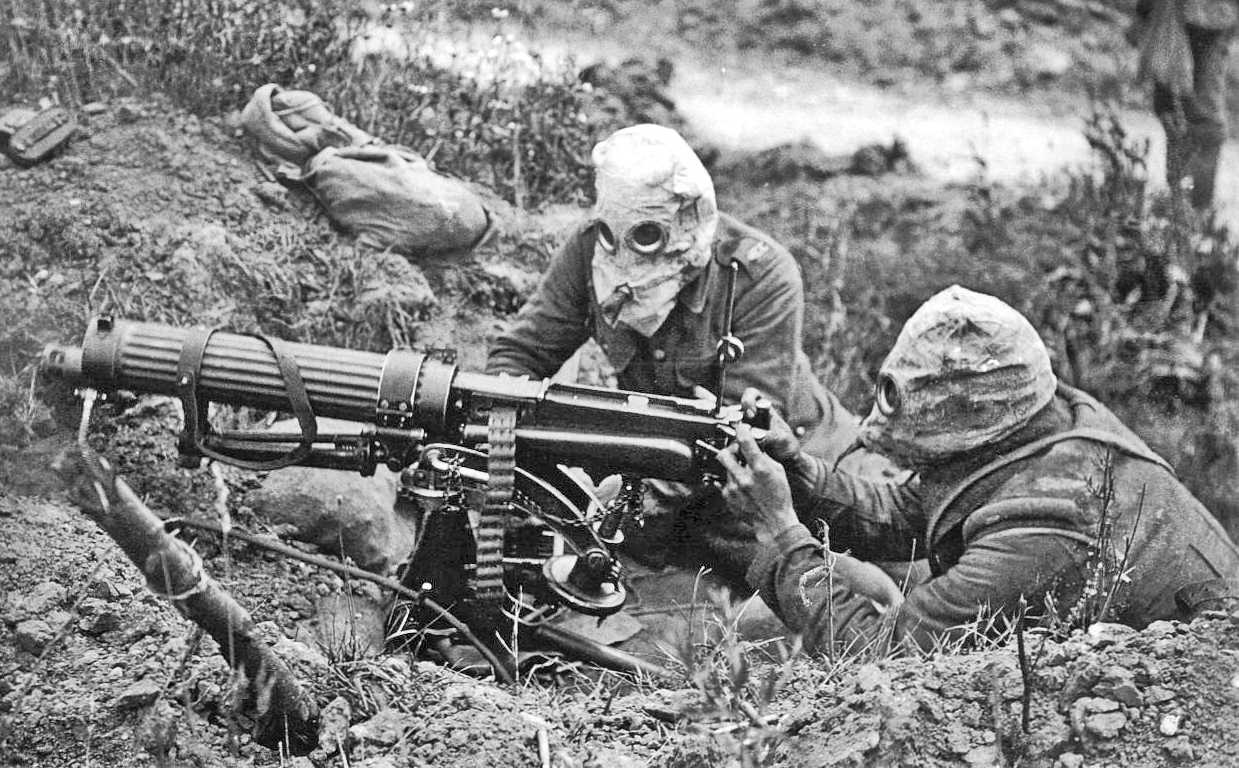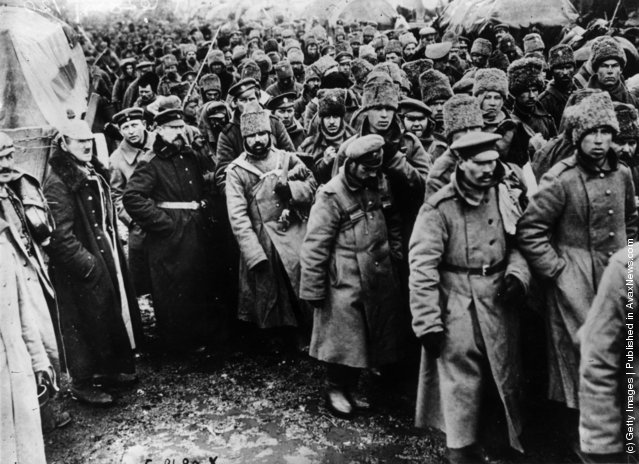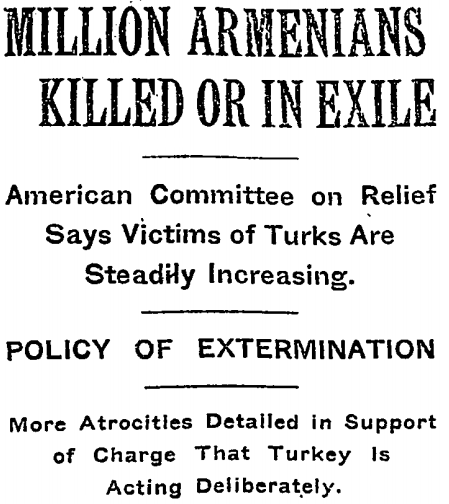Stalemate is Deadly on Western Front; Russia Collapsing in East.
Secret Orders for Mass Murder of Armenians in Turkey
Special to The Great War Project
(25-27 May) Thousands of soldiers are dying every day, and the news is dismal from all corners of the war’s battlefields.
On May 25 a century ago, the Second Battle of Ypres ends. This is the Belgian city that was first destroyed in the fall of 1914.
Ypres is largely demolished in the first month-long fighting. But it again becomes the object of war in the spring of 1915.
In the current battle, the Germans make extensive use of poison gas shells in and around Ypres. The gas proves to be effective, opening up a huge gap in the British trench lines. But the Germans fail to take full advantage.
According to historian Martin Gilbert, when the battle ends on this date, “the British and Canadian forces had pushed the line of trenches forward 1,000 yards over a 3,000 yard front. But the cost had been high: 16,000 casualties, as against 5,000 German casualties.”
Deadlock prevails on the Western Front. But in contrast, on the Eastern Front, the stalemate is broken. “A war of movement had begun,” reports Gilbert.
The combined German and Austrian forces assault positions in the Carpathian mountain passes that the Russians had seized in the winter fighting just a few months earlier.
The Russian army is collapsing under the pressure. On May 25th one hundred years ago, “the Germans announced that they had taken 21,000 Russians prisoners.” The Austro-German forces are pushing east, back over the mountains and into the flatlands of Austrian Galicia [today’s southern Poland and Western Ukraine].
As more and more territory falls to the Austrians, Martin Gilbert writes: “It was announced that their gains on the Carpathian Front included 153,000 Russian prisoners and three hundred guns.
According to Gilbert, “Russia’s hopes of gaining Austrian territory were rapidly dissolving.”
It is now Russia’s own territory that, “for the first time since the Napoleonic Wars, was seriously at risk.”
The Austro-German forces also use gas weapons extensively in this campaign.
In Turkey, more horrific details of the deportation and slaughter of the Armenian population are emerging.
On May 24th, “Russia, France, and Britain issued a public denunciation of the Turkish killing of Armenians,” reports historian Gilbert, “calling it an act which was ‘against humanity and civilization.’ For these ‘sub-human crimes,’ the declaration warns, ‘all members’ of the Ottoman Government would be held personally responsible.”
This declaration has little effect on the Ottoman leaders. By mid-May some Russian soldiers arrive in Armenian towns to defend the defenseless population. But on May 26th the Ottoman government issues its Deportation Law, which according to historian Eugene Rogan, “allowed for the wholesale relocation of the Armenian population of the six provinces of eastern Anatolia [Turkey] to undisclosed locations away from the Russian front.”
Then follows orders from the Ottoman Interior Ministry to “provincial and district governors … calling for the immediate deportation of all Armenians.”
The Armenians are given three to five days to ready themselves. The authorities claim the “relocation” is temporary for the duration of the war. “Armenians were encouraged to deposit any possessions they could not carry with the government for safekeeping,” Rogan.reports.
Alongside these publicly declared measures of forced displacement the government issues…
….secret orders “for the mass murder of Armenian deportees.”
These orders are not written down. They are communicated orally, writes Rogan. “Any provincial governor who asked for written confirmation of the orders or who otherwise opposed the mass murder of unarmed civilians faced dismissal and even assassination.”
That is exactly what happens to the district governor of Diyarbakir province in southeastern Turkey. For demanding to see written orders, he is murdered.



